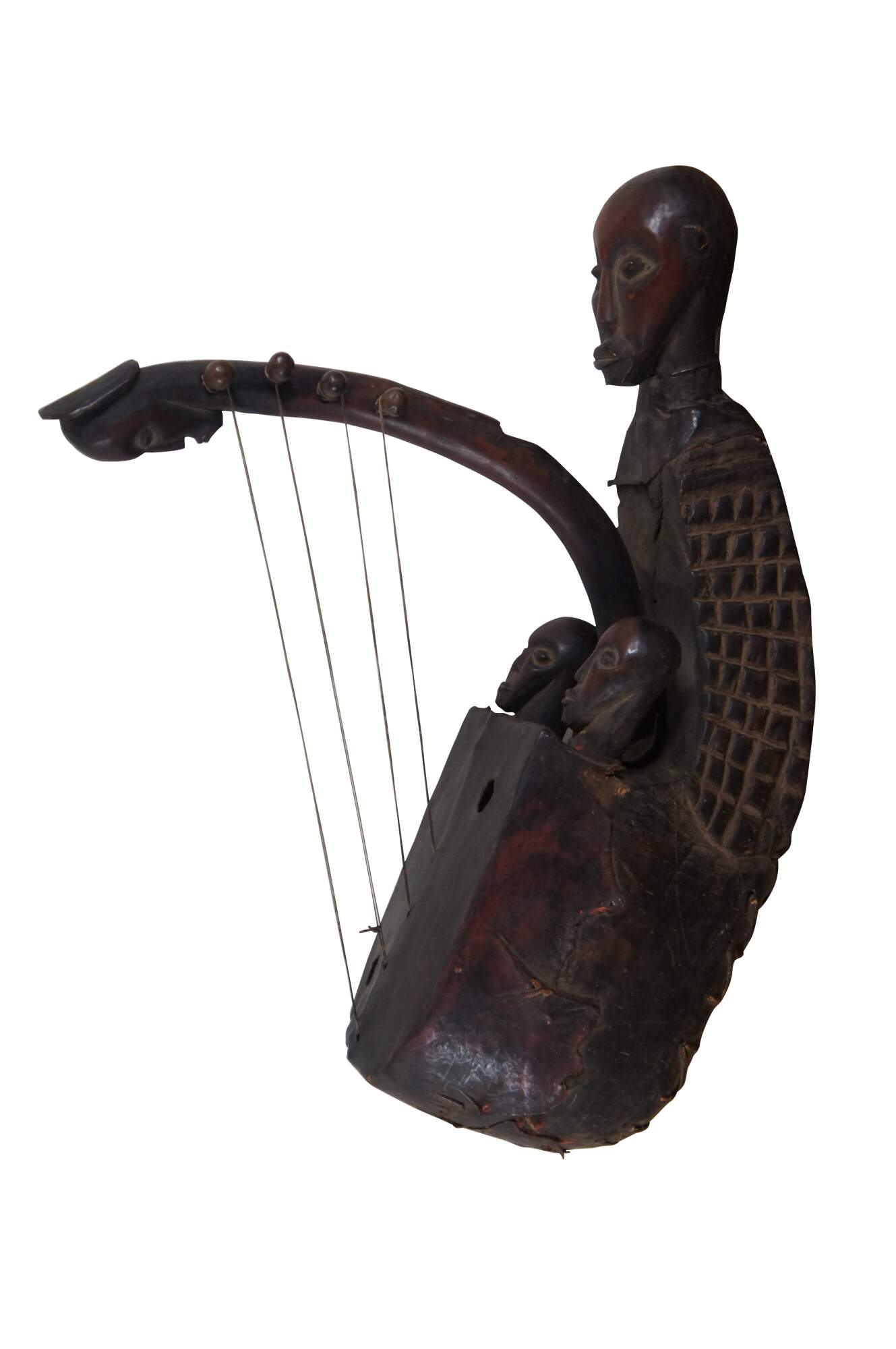
Shipping:
Free Shipping Included
Delivery:
Estimated 2-15 Business Days
Payments:
Credit Card, Check, Cash, PayPal, Apple Pay, Venmo
Returns:
30 Days 100% Money Back Guarantee, Buyer Pays Return Shipping
Description
Rare vintage museum quality African Mangbetu fertility harp / domu, an African stringed instrument of the Mangbetu poeple, featuring a round wooden body, stretched red leather head with two sounding holes and four strings on pegs. Hand carved, in the shape of a wooden figure wearing a textured cloak or robe, flanked by two carved heads at the base of the instruments neck, which terminates in a fourth human face. Mauwotu.
"The Mangbetu are a Central Sudanic ethnic group in the Democratic Republic of the Congo, living in the northeastern province of Haut-Uele. The Mangbetu are known for their highly developed art and music. One instrument associated with and named after them is the Mangbetu harp or guitar. The Mangbetu stood out to European colonists because of their elongated heads. Traditionally, babies' heads were wrapped tightly with cloth in order to give them this distinctive appearance. The practice, called Lipombo, began dying out in the 1950s with the arrival of more Europeans and westernization. Because of this distinctive look, it is easy to recognize Mangbetu figures in African art." (Source: Wikipedia)
"Mangbetu aristocrats surrounded themselves with a wide variety of finely crafted utilitarian objects such as boxes, jars, stools, musical instruments, and weapons, many of which feature figurative elements. The designs of musical instruments are especially beautiful examples of the ingenious amalgamation of a functional artifact and the human form. In more elaborately carved harps, the entire neck may be figurative. There is also considerable variation in the curvature of the bow and the angle of the neck's attachment to the resonator. The resonators come in two forms, the hourglass shape or an oval shape, and usually feature two small sounding holes on the top surface. A variety of animal skins were used to cover the resonator, including pangolin scales, okapi and leopard pelts, and snake and lizard skins. In ethnic groups related to the Mangbetu, the anthropomorphic convention is carried further and legs are carved below the resonator so that the body of the harp is also the body of the figure.
Mangbetu harps have been studied in depth as art objects; their musical use, however, remains largely unexplored. Although they appear in historical photographs from the region, these rarely show the harp being played. As the Mangbetu enthusiasm for carving continued and harps became increasingly figurative, the ability to appropriately string and tune the instruments became increasingly difficult. Before long, the importance of the harp as a musical instrument was replaced by its importance as an art object. This evolution led to instruments that were completely unplayable—with strings too close together, unusable tuning pegs, flattened sound boxes, etc.—but undoubtedly visually striking.
The harp first appeared in Mangbetu culture some time in the late nineteenth century, and reached its peak during the colonial period of the early twentieth century. Many believe that the initial practice of carving representations of human heads was adopted from the neighboring Azande peoples to the north. As cultural and musical traditions have changed over the years in Mangbetu culture, musical instruments have appeared and disappeared. Some Mangbetu elders claim that the heads of the harp represented Queen Nenzima and King Yangala, and that after their deaths the practice of that particular style gradually declined. Today, harps are no longer found in Mangbetu society." (Source: The Metrololitan Museum of Art)
Condition
Good Overall - Scuffs/wear/scrapes to wood; some dried out sections to leather head; needs new strings
Dimensions
8.5" x 21" x 27" (Width x Depth x Height)